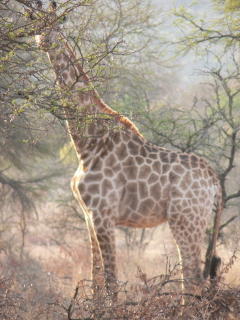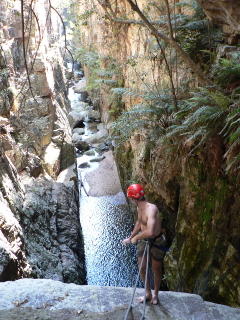Tourist tips
I am told that the following were published on a tourism webpage on which people could ask questions about South Africa. South Africans supplied the answers.
Q: Does it ever get windy in South Africa? I have never seen it rain on TV, so how do the plants grow? (UK)
A: We import all plants fully grown and then just sit around watching them die.
Q: Will I be able to see elephants in the street? (USA)
A: Depends how much you've been drinking.
Q: I want to walk from Durban to Cape Town- can I follow the railroad tracks? (Sweden)
A: Sure, it's only two thousand kilometres. Take lots of water.
Q: Is it safe to run around in the bushes in South Africa? (Sweden)
A: So it's true what they say about Swedes.
Q: Are there any ATMs (cash machines) in South Africa? Can you send me a list of them in JHB, Cape Town, Knysna and Jeffrey's Bay? (UK)
A: What did your last slave die of?
Q: Can you give me some information about Koala Bear racing in South Africa? (USA)
A: Aus-tra-lia is that big island in the middle of the pacific. A-fri-ca is the big triangle shaped continent south of Europe which does not... oh forget it. Sure, the Koala Bear racing is every Tuesday night in Hillbrow. Come naked.
Q: Which direction is north in South Africa? (USA)
A: Face south and then turn 90 degrees. Contact us when you get here and we'll send the rest of the directions.
Q: Can I bring cutlery into South Africa? (UK)
A: Why? Just use your fingers like we do.
Q: Can you send me the Vienna Boys' Choir schedule? (USA)
A: Aus-tri-a is that quaint little country bordering Ger-man-y, which is...oh forget it. Sure, the Vienna Boys Choir plays every Tuesday night in Hillbrow, straight after the Koala Bear races. Come naked.
Q: Do you have perfume in South Africa? (France)
A: No, We don't stink.
Q: I have developed a new product that is the fountain of youth. Can you tell me where I can sell it in South Africa? (USA)
A: Anywhere significant numbers of Americans gather.
Q: Can you tell me the regions in South Africa where the female population is smaller than the male population? (Italy)
A: Yes, gay nightclubs.
Q: Do you celebrate Christmas in South Africa? (France)
A: Only at Christmas.
Q: Are there killer bees in South Africa? (Germany)
A: Not yet, but for you, we'll import them.
Q: Are there supermarkets in Cape Town and is milk available all year round? (Germany)
A: No, we are a peaceful civilisation of vegan hunter-gatherers. Milk is illegal.
Q: Please send a list of all doctors in South Africa who can dispense rattlesnake serum. USA)
A: Rattlesnakes live in A-meri-ca, which is where YOU come from. All South African snakes are perfectly harmless, can be safely handled and make good pets.
Q: I was in South Africa in 1969, and I want to contact the girl I dated while I was staying in Hillbrow. Can you help? (USA)
A: Yes, and you will still have to pay her by the hour.
Q: Will I be able to speek English most places I go? (USA)
A: Yes, but you'll have to learn it first





